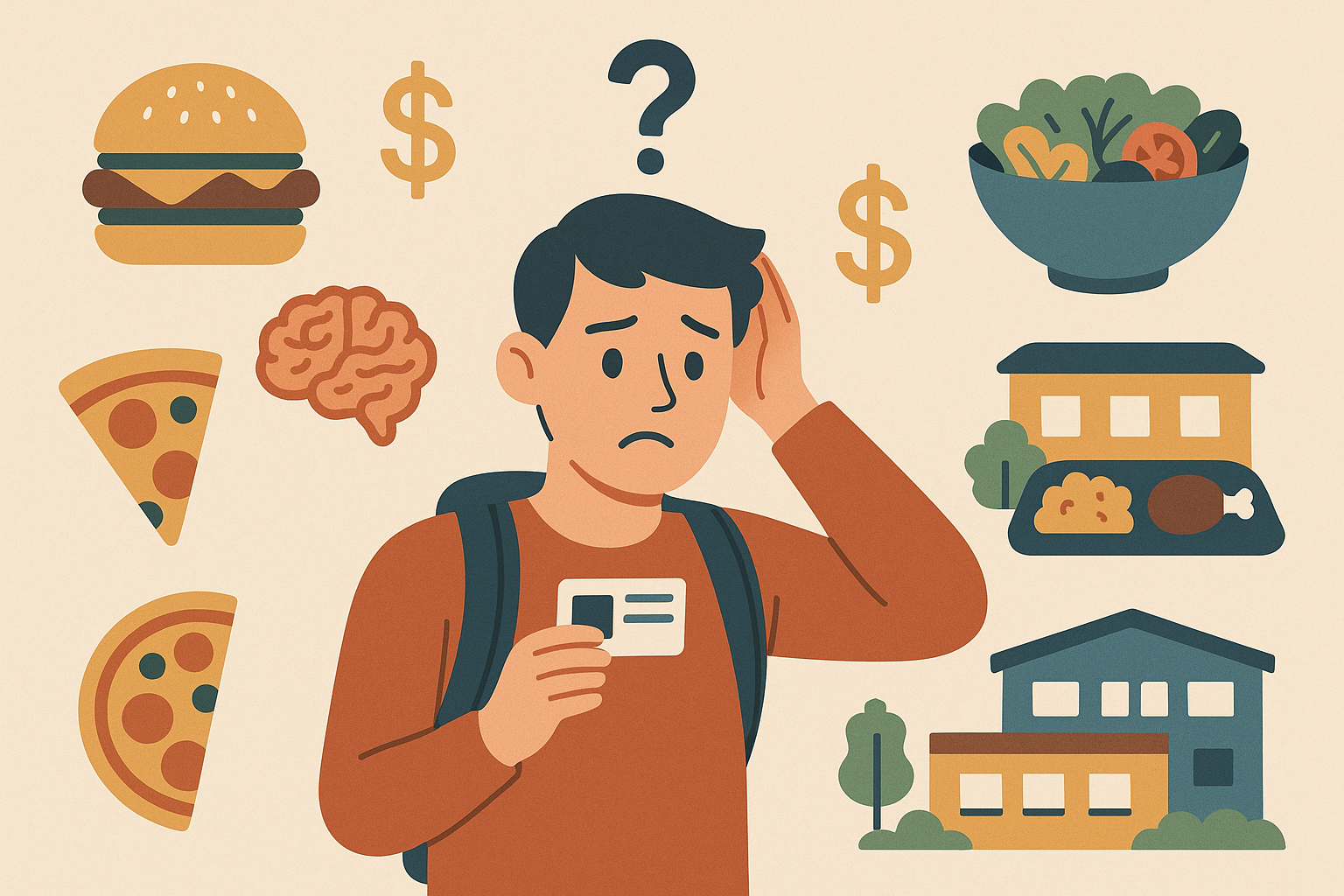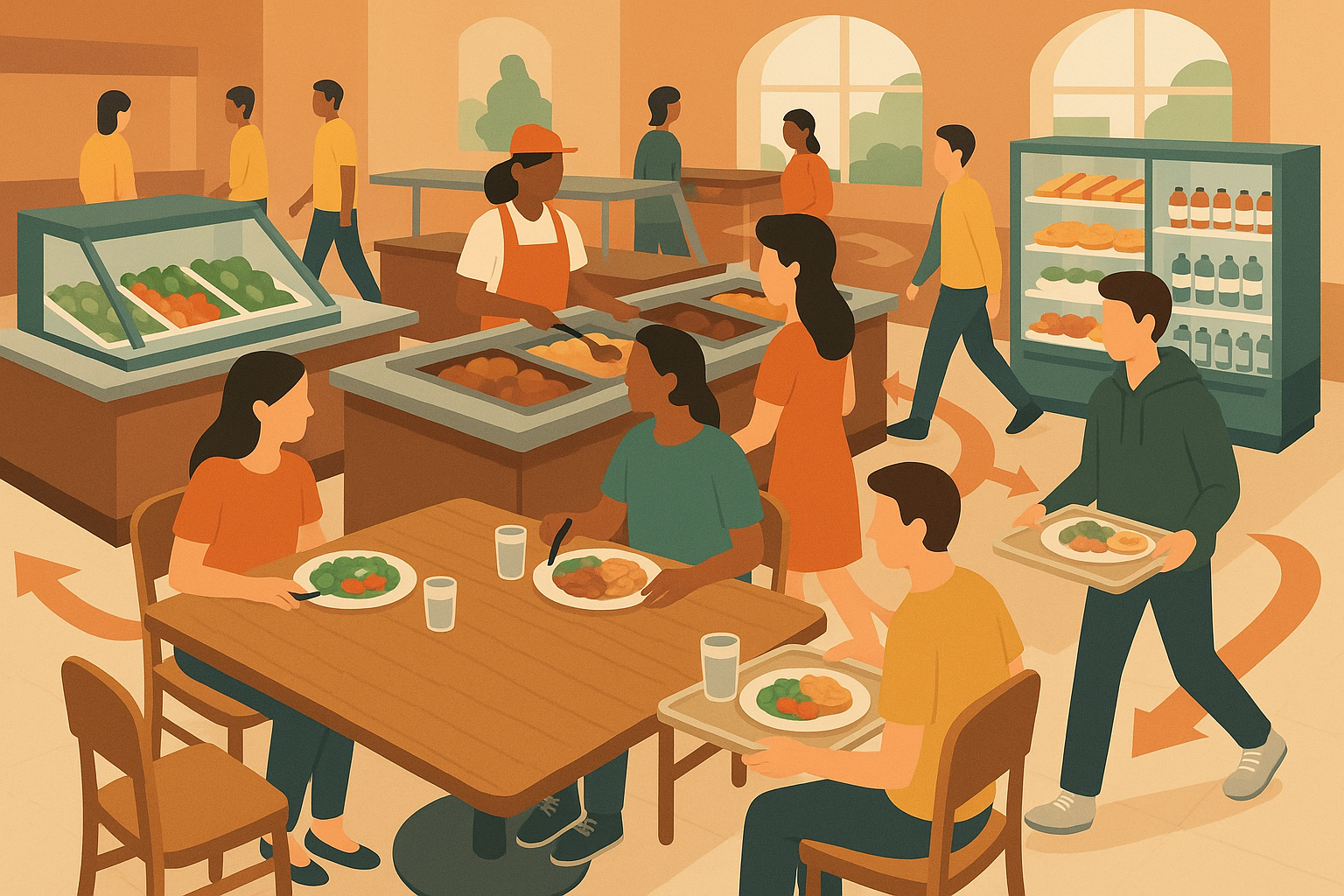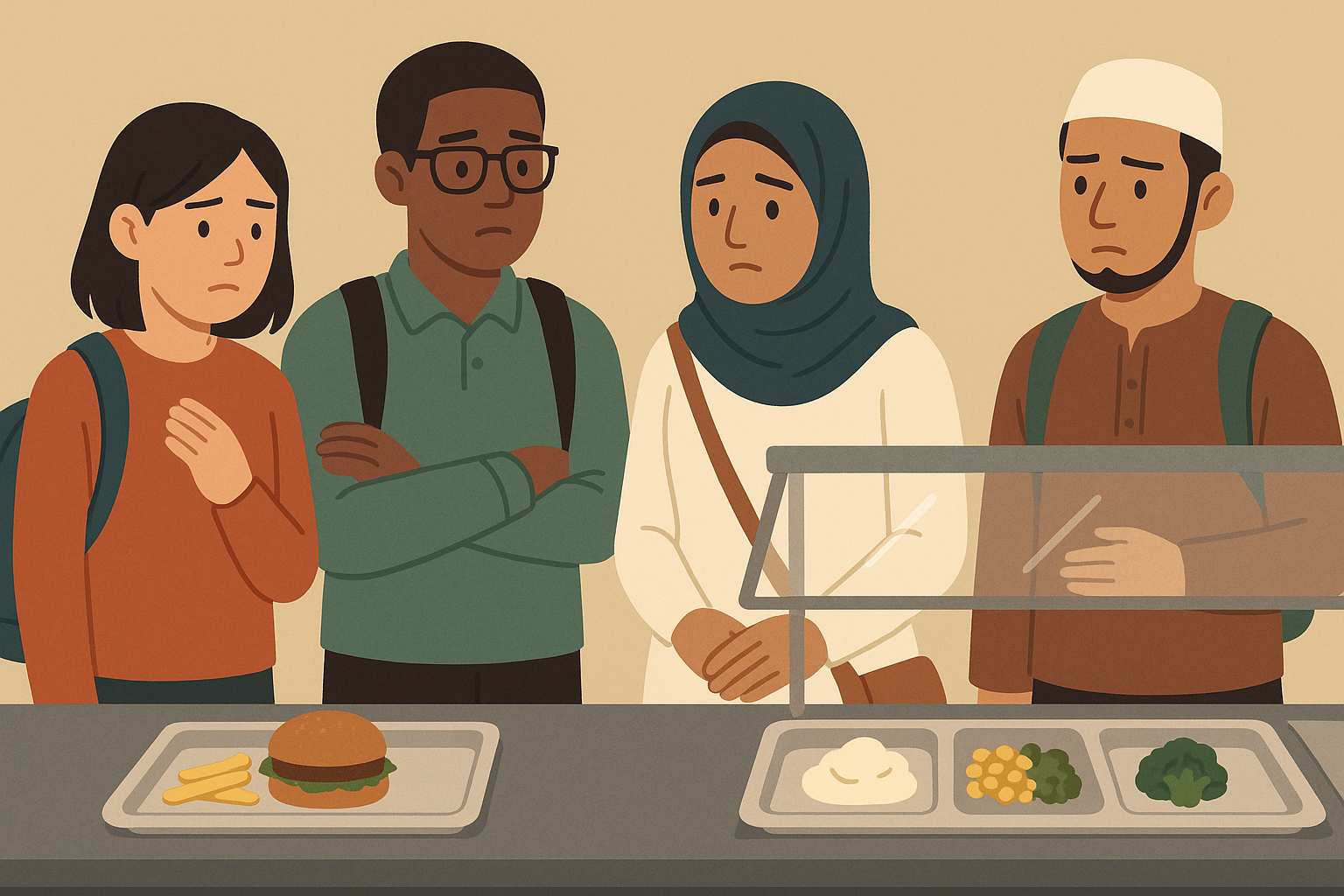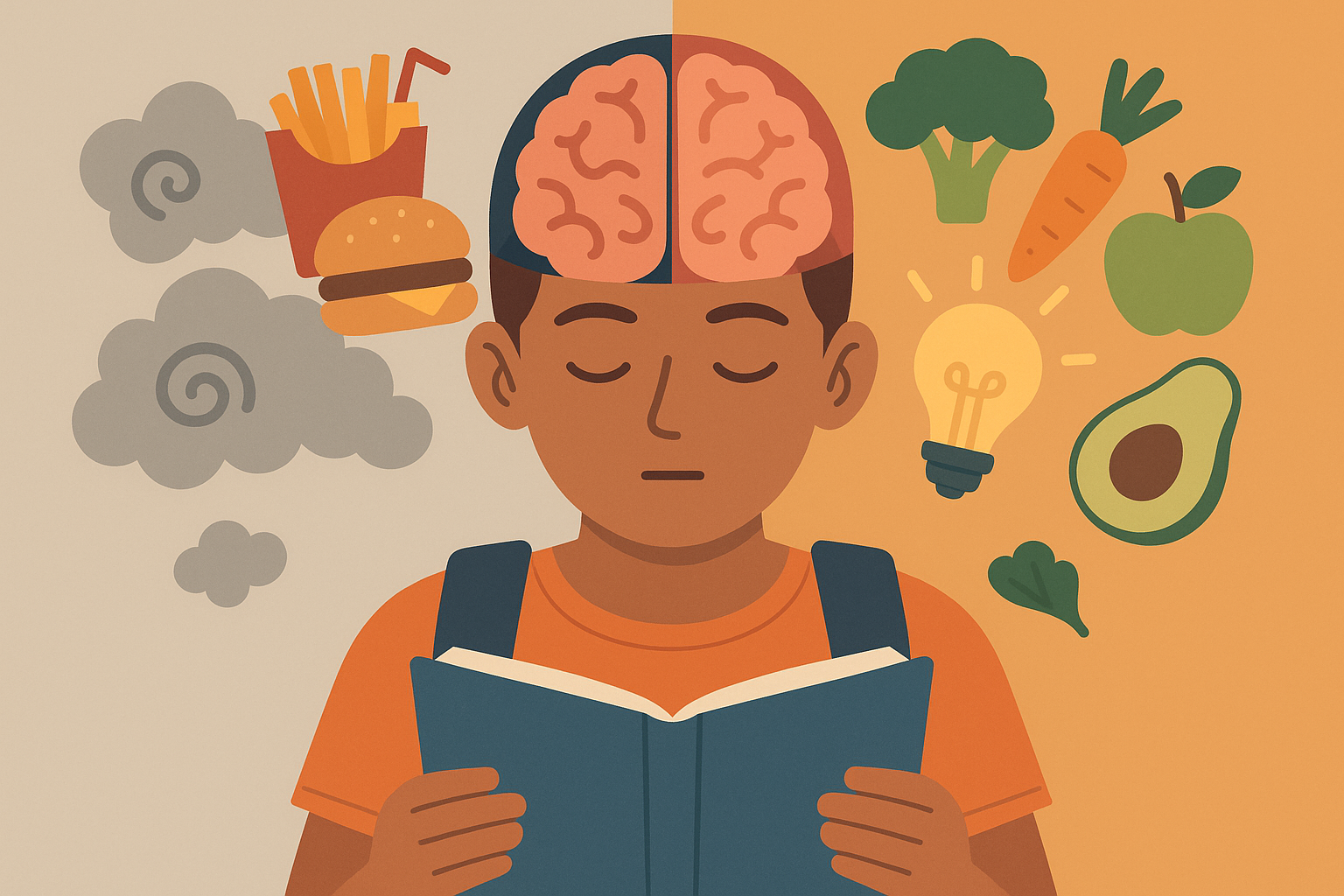UH Meal Plan Psychology: What Nobody Tells You About Campus Dining Mind Games

The University of Hawaii Manoa requires students living in residence halls to participate in mandatory meal plans, but here’s what they don’t tell you: these systems are basically designed to mess with your head and your wallet in ways that’ll stick with you long after you graduate. With over 30% of products used in UH food services being sourced locally, you’d think campus dining would be straightforward. Nope. It’s actually a complex mind game of convenience, psychology, and money management that most students stumble through without understanding what’s really happening.

Table of Contents
- The Digital Money Trap: How Your Manoa One Card Messes With Your Brain
- Why You’re Always Broke by Week 10 (It’s Not What You Think)
- The Campus Food System Designed to Control Your Choices
- Your Brain on Dining Hall Food: The Hidden Academic Impact
- Smart Money Moves for Your UH Meal Plan
- How This Connects to Your Post-College Wellness Journey
TL;DR
- Your Manoa One Card tricks your brain into spending more because it doesn’t feel like real money
- Campus dining is designed to influence your behavior through sneaky psychology and pricing tricks
- The processed food you’re eating is literally making it harder to focus and perform academically
- Most students fall into predictable spending patterns that waste money and mess up their nutrition
- Managing your meal plan smart requires treating it like the finite budget it actually is
- The habits you’re forming now will probably stick with you forever, so make them good ones
The Digital Money Trap: How Your Manoa One Card Messes With Your Brain
Look, I’m gonna be straight with you about something that took me way too long to figure out. That little plastic card in your wallet? It’s basically designed to make you spend money without feeling the pain of actually spending money.
Think about it – when was the last time you counted out actual cash for food? Probably never on campus. And that’s the whole point. When you swipe that Manoa One Card, your brain doesn’t register it the same way as handing over a $20 bill. It’s like playing with Monopoly money, except this Monopoly money determines whether you’re eating actual food or surviving on vending machine snacks by Thanksgiving.
I learned this the hard way my freshman year when I was buying those fancy açai bowls every other day thinking, “It’s just a swipe!” Yeah, well, those swipes added up real quick, and suddenly I’m rationing granola bars in November like I’m preparing for the apocalypse.

The “I Already Paid For It” Trap That’s Ruining Your Life
Here’s where your brain really screws you over. Since you already dropped hundreds (or thousands) on your meal plan at the beginning of the semester, you feel like you HAVE to use every single credit or you’re wasting money.
I watched my roommate Sarah do this exact thing. She had the Prime 19 plan but was only eating like 12 meals a week. Instead of just accepting that she overestimated her appetite, she started forcing herself to eat extra meals at Gateway just because she “paid for them.” She’d literally eat dinner, then go back for a second dinner an hour later because she had unused swipes.
Spoiler alert: This didn’t end well. She gained weight, felt gross all the time, and was still stressed about “wasting” money. Sometimes you just gotta cut your losses, people.
Why You Go Crazy Spending in the Last Two Weeks
We’ve all seen it happen (or done it ourselves) – suddenly it’s finals week and everyone’s running around campus with armfuls of energy drinks and bags of chips, desperately trying to burn through their remaining meal plan money before it disappears forever.
This isn’t just bad planning. It’s your brain freaking out about losing money you’ve already spent. The thought of those dining dollars just vanishing makes you feel physically sick, so you end up buying stuff you don’t even want just to feel like you “got something” for your money.
Understanding these psychological patterns shares similarities with diet culture’s toxic relationship with food, where artificial scarcity creates unhealthy behaviors that stick around way longer than they should.
I once bought 15 Red Bulls in one day during finals week. FIFTEEN. I don’t even like Red Bull that much, but the thought of losing those credits was driving me insane. Guess what happened to most of those Red Bulls? They expired in my dorm room. Real smart, right?
According to UH Manoa Dining Services, meal plans reset weekly on Sunday with meals expiring every Saturday at midnight, which basically creates this artificial panic that makes you do stupid stuff with your money every single week.
How Your Friends Are Secretly Controlling What You Eat
This one’s sneaky, but once you notice it, you can’t unsee it. You eat differently when you’re with other people. Period.
When I ate alone, I’d usually grab a salad or something light. But the second I was with my study group? Suddenly I’m ordering pizza and loaded fries because that’s what everyone else was getting. It’s like your brain goes, “Well, if Jake’s getting nachos, nachos must be the right choice here.”
Your friends aren’t trying to sabotage you (probably), but group dining definitely makes you make choices you wouldn’t make on your own. Just something to keep in mind next time you find yourself ordering something just because everyone else is.
When Having Too Many Choices Becomes Overwhelming
You know that feeling when you walk into Gateway and just… stand there? Staring at all the options like you’ve never seen food before? That’s decision fatigue, and it’s real.
Your brain gets tired from making choices all day (what to wear, which classes to attend, whether to actually do that reading), so by the time you get to dinner, you just default to whatever’s easiest or most familiar. That’s why you probably eat the same five things over and over, even though there are literally dozens of options.
This gets worse when you’re stressed about exams or projects. Your brain just can’t handle one more decision, so you grab whatever’s closest and call it a day.
| UH Manoa Dining Locations | Meal Swipe Value | Best For |
|---|---|---|
| Gateway Café | All-you-care-to-eat | High-volume eaters |
| Hale Aloha Cafe | All-you-care-to-eat | Comfort food cravings |
| Campus Center Food Court | $6.00 credit | Quick meals between classes |
| Ba-Le | $6.00 credit | Asian cuisine variety |
| Starbucks | $6.00 credit | Coffee and light snacks |
| B’RITO | $6.00 credit | Customizable healthy options |
The Pricing Psychology Tricks You Fall for Every Day
Campus dining places expensive stuff on menus specifically to make everything else seem reasonable. It’s called anchoring, and you fall for it every single time without realizing it.
I started noticing this when I realized I was consistently choosing the “medium-priced” options on menus, thinking I was being reasonable. The truth is, those expensive items were there specifically to make me feel good about spending more than I actually wanted to. Once you see these tricks, you can make choices based on what you actually want instead of what they want you to think is a “good deal.”

Why You’re Always Broke by Week 10 (It’s Not What You Think)
Okay, real talk time. Running out of meal plan money isn’t usually because you’re some kind of reckless spender. It’s because nobody actually explains how this whole system works, and you’re basically flying blind until you crash and burn.
Here’s the thing – your UH meal plan operates on a declining balance system where you have a finite amount of money that needs to last an entire semester. Sounds obvious, right? But most people treat their meal plan like it’s unlimited until suddenly it’s not.
I figured this out the hard way when I was buying coffee and snacks between classes without keeping track. Those $4 coffees and $3 muffins seemed harmless until I did the math and realized I was spending like $15 a day on random stuff. At that rate, even a huge meal plan wouldn’t last the semester.
The Simple Math Nobody Teaches You
This isn’t rocket science, but for some reason, nobody sits you down and explains it. Take your total meal plan money, divide it by the number of weeks in the semester, and boom – that’s your weekly budget. Go over that consistently, and you’re gonna have problems.
Just like intermittent fasting requires strategic planning to work with women’s unique nutritional needs, meal plan management needs intentional budgeting that most students never learn.
Take Jennifer, a UH freshman who started with the Basic 7 meal plan. She calculated that with 15 weeks in the semester, she had exactly 105 meals to work with. By week 8, she’d already used 72 meals—putting her 15 meals over budget. Instead of panicking, she adjusted by using her dining dollars strategically and supplementing with the campus water refill stations that have saved over 1 million plastic bottles, reducing her need to purchase beverages.
I started doing this check every Sunday morning with my coffee. Takes literally two minutes, but it completely changed how I managed my money. No more surprises, no more panic spending at the end of the semester.
My Super Simple Weekly Check:
- Look at my remaining balance
- Count how many weeks are left
- Divide balance by weeks = weekly budget
- If I went over last week, eat cheaper this week
- If I’m under budget, maybe I can splurge a little
That’s it. Nothing fancy, just basic math that somehow nobody teaches you.
Why Finals Week Always Screws You Over
Here’s something they don’t mention in orientation: dining halls have weird hours during finals and breaks. Like, right when you need food the most because you’re stressed and studying 24/7, half the places are closed or have reduced hours.
My first finals week, I got to Gateway at 8 PM expecting dinner and found out they closed at 7. Ended up spending way more money on vending machine food and delivery than I would have if I’d just planned ahead.
A survey by the University of Hawaiʻi Office of Sustainability found that over one million plastic bottles were saved through campus water refill stations, which shows how small changes in your routine can actually make a big difference when you plan ahead instead of scrambling at the last minute.
Now I always check the holiday/finals schedule at the beginning of the semester and plan accordingly. Saves money and stress.

Getting the Most Bang for Your Buck
Not all campus dining is created equal. Some places give you way more food for your money, and others are basically highway robbery.
The all-you-can-eat places (Gateway and Hale Aloha) are actually the best deal if you’re genuinely hungry. But if you just want a quick snack, you’re better off at the retail spots where you can get exactly what you need without overeating just because it’s “unlimited.”
UH Manoa Dining Services operates 11 dining locations across campus that stay open from 6AM to 11PM, but here’s the catch – you can only redeem meal swipes for $6.00 at retail locations. So if your meal costs more than six bucks, you’re paying extra out of pocket.
The Off-Campus Secret That Actually Works
I also figured out that some of the local places near campus take your Manoa One Card, which is cool for when you want something different. Just know that off-campus is usually more expensive, so save it for special occasions or when you really need a break from campus food.
Marcus, a junior from the mainland, discovered that his Manoa One Card worked at several local markets near campus. He strategically used his dining dollars to purchase fresh produce and cultural foods that weren’t available in the dining halls, supplementing his meal plan with ingredients that connected him to his Filipino heritage while staying within his campus dining budget.
The Campus Food System Designed to Control Your Choices
Alright, this might sound a little conspiracy-theory-ish, but hear me out. The way campus dining is set up isn’t random. They’ve thought about everything – where to put the healthy food (usually in the back), how to make the processed stuff look more appealing (better lighting, eye-level placement), and how to get you to spend more money without thinking about it.
Once you start noticing this stuff, you see it everywhere. It’s not necessarily evil, but it’s definitely designed to influence your choices in ways that benefit them more than you.

The Convenience Trap That’s Actually Inconvenient
Campus dining sells itself on convenience, but is it really convenient to feel like crap all the time because you’re eating processed food? Is it convenient to run out of money halfway through the semester?
Real convenience would be having healthy , affordable options that don’t require a PhD in nutrition to navigate. Instead, we get fast food that happens to be on campus.
The recent Cougar Woods renovation shows how dining facility design directly impacts what students choose to eat. The newly renovated space probably has updated layouts that guide your choices in ways you won’t even notice.
I’m not saying you have to eat kale for every meal, but maybe think twice before defaulting to the quickest option just because it’s there.
How College Is Programming Your Adult Eating Habits
This is the part that actually matters long-term. The way you eat in college doesn’t just stay in college. These habits stick with you.
If you spend four years grabbing whatever’s fastest and most convenient, guess what you’re gonna do when you’re a stressed adult with a job? Same thing. If you never learn to plan meals or think about nutrition, that doesn’t magically change when you graduate.
The eating patterns you establish during college often stick around into adulthood, making it crucial to understand how to choose the healthiest options even when you’re dealing with institutional food systems that prioritize convenience over nutrition.
I wish someone had told me this freshman year instead of letting me think my dining hall habits were just a temporary college thing. Spoiler alert: they weren’t.
Simple Habit Tracking That Actually Works:
- Current Pattern: What do you typically eat in a day?
- Triggers: What situations make you choose junk food?
- One Small Change: Pick ONE thing to improve this week
- Environmental Tweak: How can you make the healthy choice easier?
- Weekly Check-in: How’d you do? (Be honest, not perfect)
- Next Week’s Focus: What one adjustment will help you improve?
When “Equal” Meal Plans Aren’t Actually Equal
Here’s something that bugs me – everyone pays the same for meal plans, but not everyone gets the same value. If you’re vegetarian, have allergies, or eat foods that aren’t well-represented in campus dining, you’re basically paying the same price for fewer options.
My friend who’s gluten-free basically lived off salads and grilled chicken for four years because there weren’t many safe options for her. Meanwhile, people who could eat anything had dozens of choices. Same price, way different experience.
This isn’t necessarily anyone’s fault, but it’s worth acknowledging that the system works better for some people than others.

When Campus Dining Doesn’t Match Your Cultural Identity
If your cultural identity is tied to specific foods and eating practices, campus dining can feel pretty isolating. This isn’t just about preference – it’s about staying connected to your background and family traditions.
While UH Manoa Dining Services sources 30% of their products locally, this focus on local ingredients doesn’t necessarily help international students or those from diverse ethnic backgrounds who might find their traditional cuisines completely missing from campus dining options.
You end up having to choose between staying within your meal plan budget or maintaining connection to foods that matter to your identity. It’s a crappy choice that nobody should have to make.
Your Brain on Dining Hall Food: The Hidden Academic Impact
Okay, this is where things get real. The food you’re eating isn’t just affecting your weight or how you feel – it’s actually impacting how well your brain works. And since you’re here to, you know, learn stuff, this is kind of important.
Most campus food is designed to be filling and cheap, not to optimize your brain function. That means you’re probably not getting the nutrients your brain needs to perform at its best, especially during high-stress periods like finals.
I noticed this big time during my sophomore year. I was eating pretty much the same rotation of pizza, burgers, and fried food, and I felt like my brain was in a fog half the time. My focus was terrible, I was tired all the time, and I thought it was just stress. Turns out, what I was eating was making everything worse.
| Nutrient Deficiency | Common Campus Food Causes | Academic Impact | Strategic Solutions |
|---|---|---|---|
| Omega-3 Fatty Acids | Limited fish, excess processed oils | Poor memory, difficulty concentrating | Seek salmon/tuna options, consider supplements |
| B-Complex Vitamins | Refined grains, limited whole foods | Mental fatigue, mood swings | Choose whole grain options, leafy greens |
| Magnesium | Processed foods, low vegetable intake | Anxiety, sleep disruption | Prioritize nuts, seeds, dark leafy vegetables |
| Vitamin D | Indoor eating, limited fortified foods | Depression, immune dysfunction | Eat outdoors when possible, fortified dairy |
| Iron | Limited red meat, poor absorption | Fatigue, cognitive fog | Combine iron sources with vitamin C foods |
How Processed Food Is Sabotaging Your GPA
This isn’t me being dramatic – there’s actual science behind this. When you eat a lot of processed, inflammatory foods, your brain doesn’t work as well. Your memory suffers, your focus is shot, and you feel tired even when you get enough sleep.
Think about it: would you put cheap gas in a Ferrari and expect it to perform well? Your brain is way more complex than a car engine, but you’re feeding it the equivalent of gas station hot dogs and wondering why you can’t concentrate during lectures.
The connection between nutrition and cognitive function becomes especially critical during high-stress academic periods, similar to how mental fitness requires specific nutritional support to maintain optimal brain performance under pressure.
I’m not saying you have to become a health food fanatic, but maybe try to get some actual nutrients in your system, especially during exam periods.

Simple Changes That Actually Make a Difference
You don’t need to overhaul your entire diet overnight. Small changes can make a big difference in how you feel and perform academically.
Strategic nutrition planning for academic success requires the same intentional approach as mastering plant-based cooking with proper flavor balance, where understanding fundamental principles creates better outcomes than random choices.
Easy Brain-Food Swaps I Actually Use:
- Choose grilled over fried when possible
- Add vegetables to whatever you’re eating (even pizza counts)
- Drink water instead of soda with meals
- Grab fruit for dessert instead of cookies sometimes
- Eat some protein at breakfast instead of just carbs
Nothing revolutionary, just basic choices that help your brain function better. You’ll notice the difference pretty quickly.
Brain-Optimized Campus Dining Strategy:
- Morning: Prioritize protein and healthy fats (eggs, nuts, avocado)
- Pre-Study: Choose complex carbs with minimal processing (oatmeal, whole grains)
- During Exams: Focus on antioxidant-rich foods (berries, dark leafy greens)
- Evening: Include magnesium-rich foods for better sleep (nuts, seeds)
Smart Money Moves for Your UH Meal Plan
Alright, let’s get practical. Managing your meal plan money isn’t complicated, but it does require paying attention. Most people just swipe and hope for the best, then act surprised when they run out of money.
The key is treating your meal plan like any other budget – because that’s what it is. You have X amount of money that needs to last Y amount of time. Stay within that, and you’re golden. Go over consistently, and you’re gonna have a bad time.

The Sunday Check-In That Saves Your Semester
This is literally the only “system” you need. Every Sunday (or whatever day works for you), spend five minutes checking where you stand financially.
Look at your balance, figure out how many weeks are left, do some basic math. If you’re on track, great. If you’re overspending, adjust. If you’re under budget, maybe treat yourself to something nice.
I started doing this after my disaster freshman year, and it completely eliminated the stress of wondering whether I had enough money left. Plus, it only takes a few minutes, so it’s not like you’re spending your whole weekend doing meal plan accounting.
Weekly Meal Plan Reality Check:
- Sunday: Check remaining meal swipes/dining dollars
- Calculate weeks left in semester (including breaks)
- Determine weekly allowance (remaining balance ÷ weeks left)
- Review last week’s actual spending vs. budget
- Identify upcoming expensive events (study sessions, social meals)
- Adjust this week’s dining strategy accordingly
- Set phone reminder for next Sunday’s check-in
The best part? Once you get in this habit, it becomes automatic. You just naturally start making better choices because you actually know where you stand financially.
How This Connects to Your Post-College Life
Here’s the thing nobody tells you: learning to navigate campus dining is actually preparing you for adult life in ways you don’t realize. The skills you develop (or don’t develop) here – budgeting, making conscious food choices, not falling for marketing tricks – are exactly what you’ll need when you’re buying your own groceries and making your own health decisions.
If you learn to question why certain foods are placed where they are, to read beyond the marketing claims, and to prioritize your long-term health over short-term convenience, you’ll be way ahead of most people when you graduate.
The challenges you face navigating institutional meal systems mirror the broader wellness landscape where convenient, processed options dominate while truly nourishing choices require more intentional effort and knowledge. Learning to read beyond meal plan marketing, understand food choice psychology, and prioritize long-term health outcomes over short-term convenience creates the foundation for becoming a conscious consumer who demands transparency, quality, and real results from wellness investments.
The skills developed navigating institutional food systems prepare you for adult wellness decisions, much like understanding how to improve gut health through emerging science requires discerning between marketing claims and evidence-based nutrition choices.
On the flip side, if you spend four years just grabbing whatever’s easiest without thinking about it, that’s probably what you’ll keep doing as an adult. And trust me, the “whatever’s easiest” options in the real world are usually even worse than campus dining.
These skills become invaluable when you’re making your own food and supplement choices after graduation, especially when you’re looking for trusted, science-backed solutions that work within real-life limitations. Organic Authority’s commitment to organic, bioavailable nutrition directly addresses the micronutrient gaps common in institutional food systems, offering the kind of rigorously vetted products that deliver measurable results for women who’ve learned to distinguish between marketing claims and genuine health benefits.

Final Thoughts
Look, your meal plan experience is about way more than just eating on campus. You’re learning how to manage money, make health decisions under constraints, and navigate systems that aren’t necessarily designed with your best interests in mind.
These are life skills that’ll serve you long after you graduate. The student who learns to budget their meal plan money, make conscious food choices, and not fall for every convenience trap is going to be way better prepared for adult life than someone who just wings it for four years.
I wish I’d understood this stuff when I was a freshman instead of learning it through trial and error (and way too many nights eating vending machine dinners). But hey, that’s why I’m sharing it with you now.
The bottom line: pay attention, make conscious choices, and remember that the habits you’re forming now are probably going to stick with you. Make them good ones.
Most importantly, remember that the skills you’re developing in questioning institutional food systems, understanding behavioral psychology, and making conscious choices within constraints are exactly what you’ll need as an adult navigating a wellness landscape full of marketing claims and convenient but nutritionally empty options.

